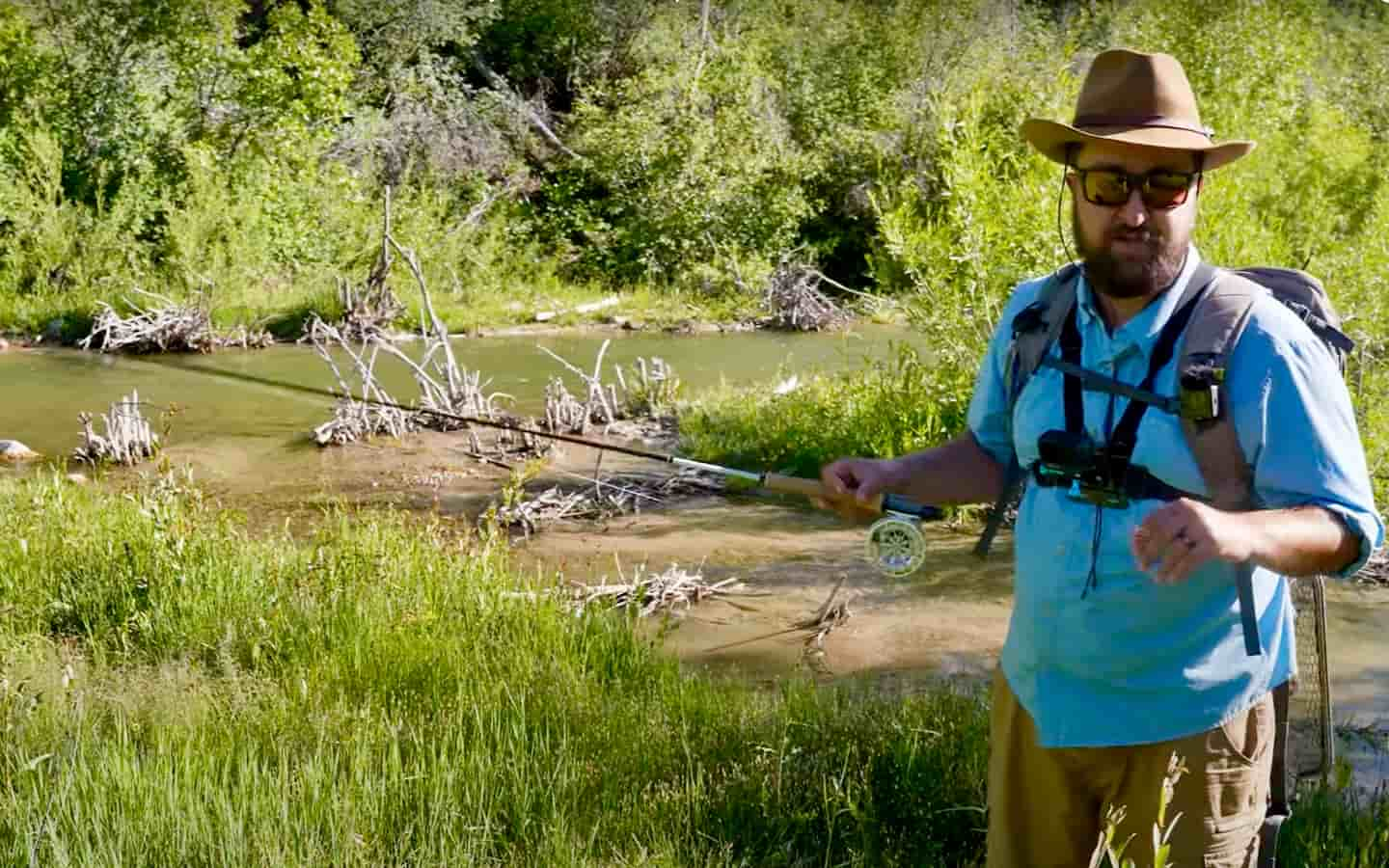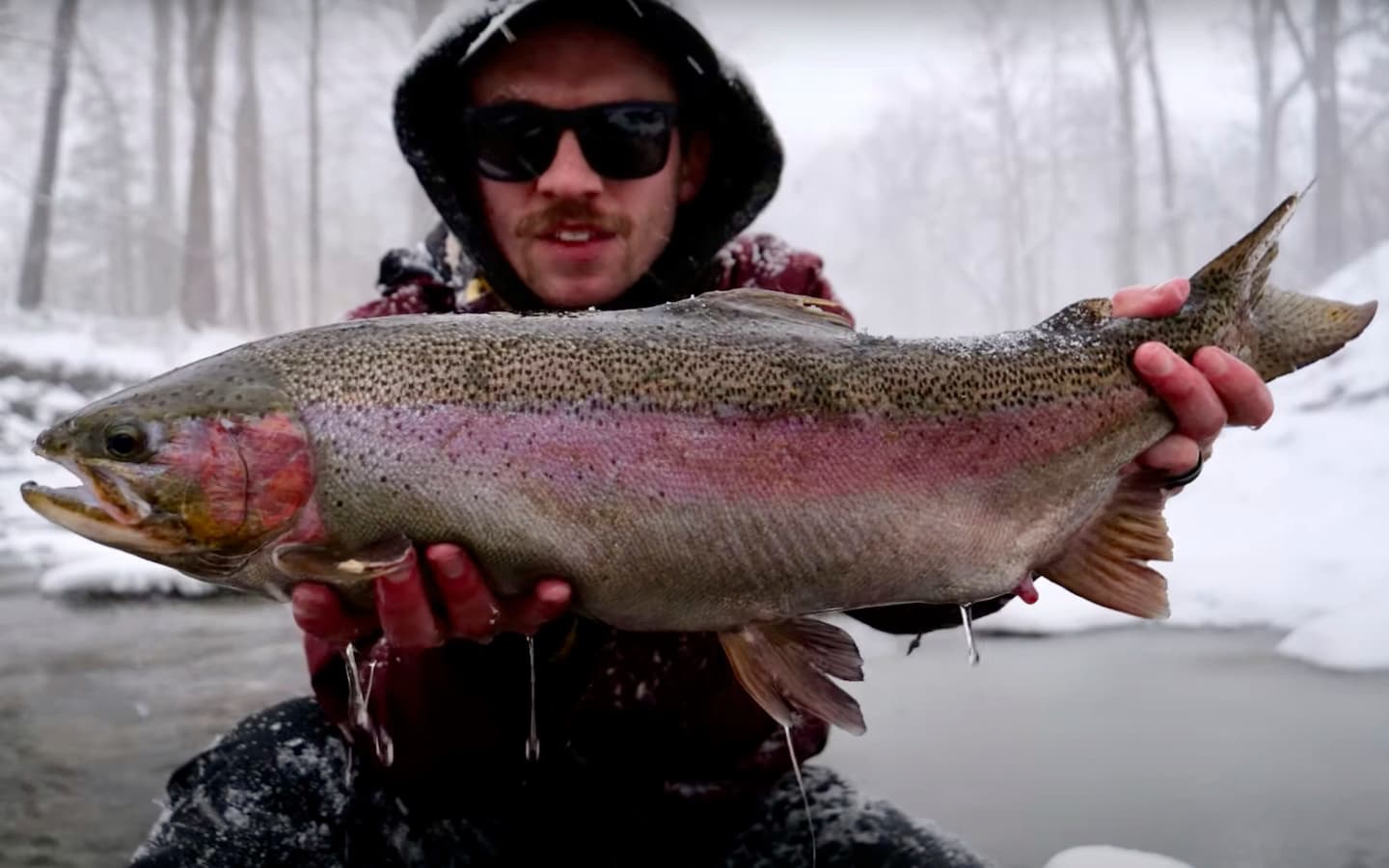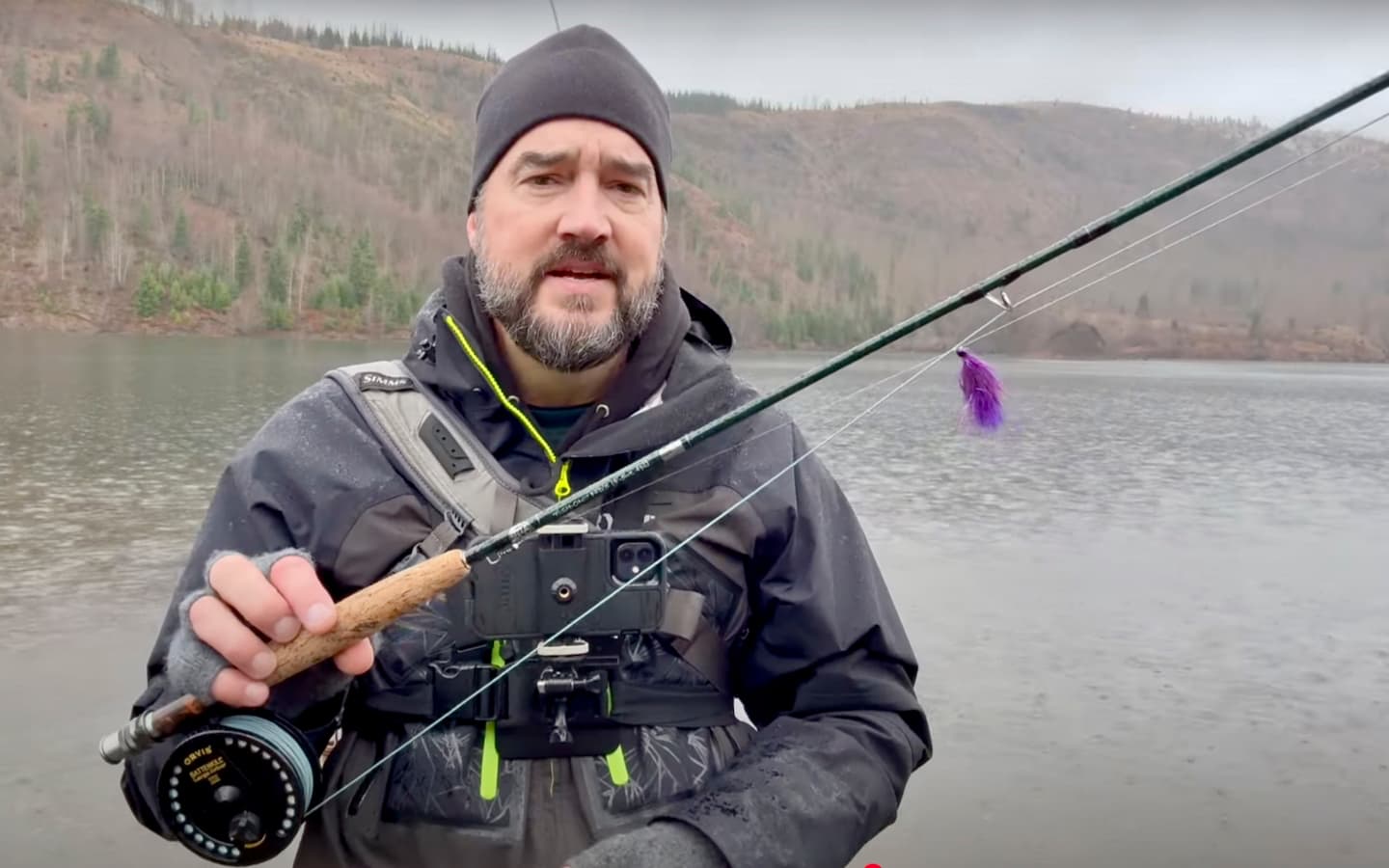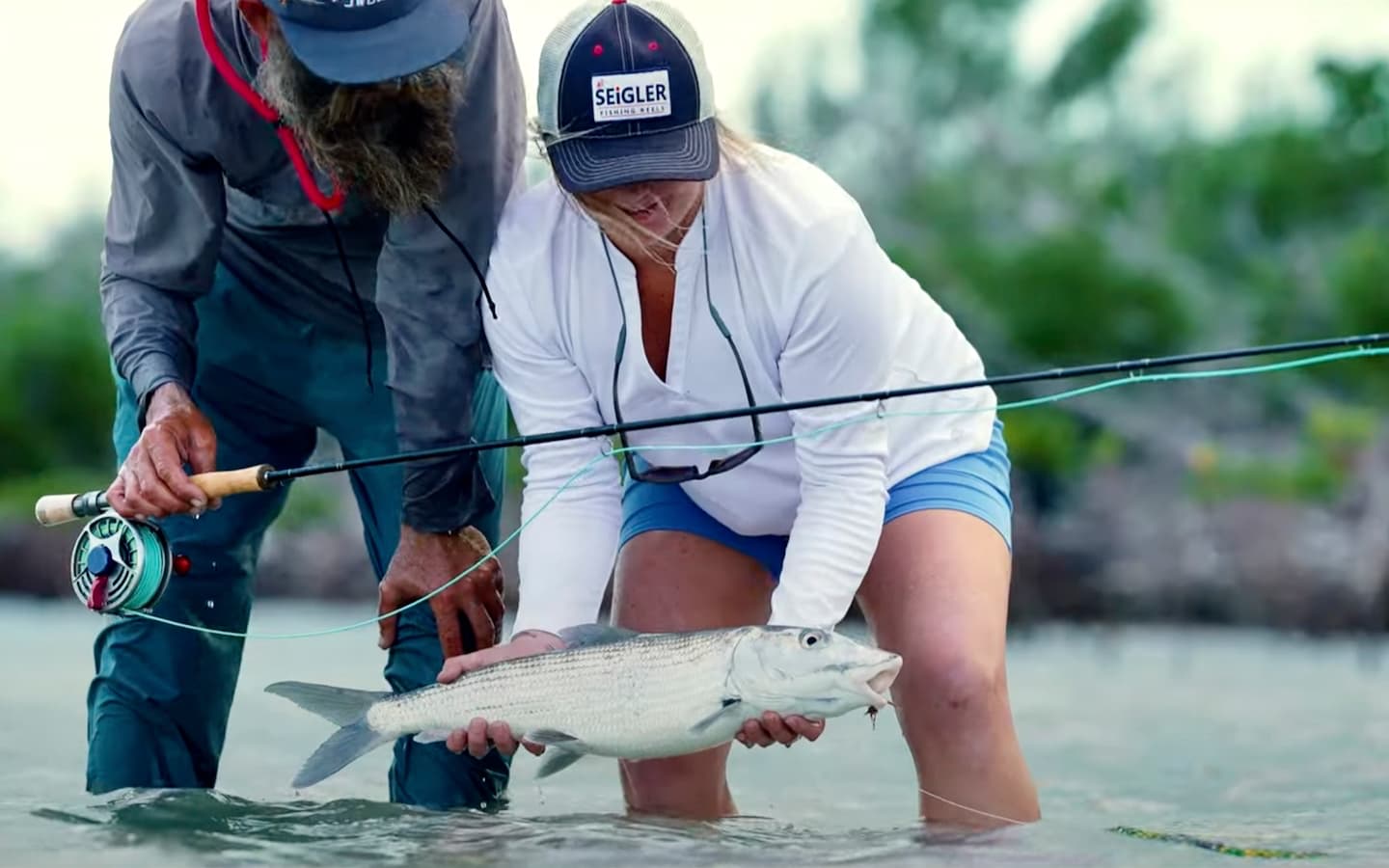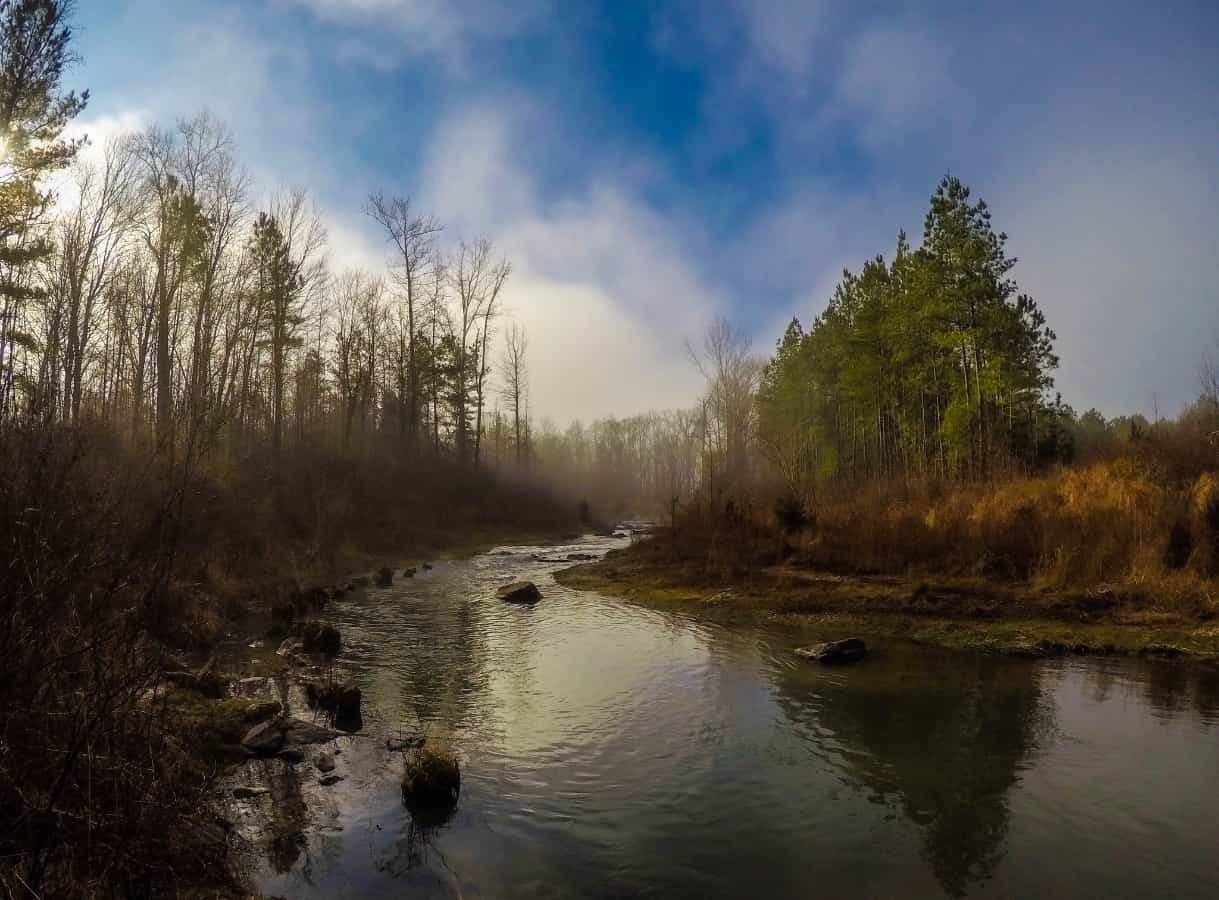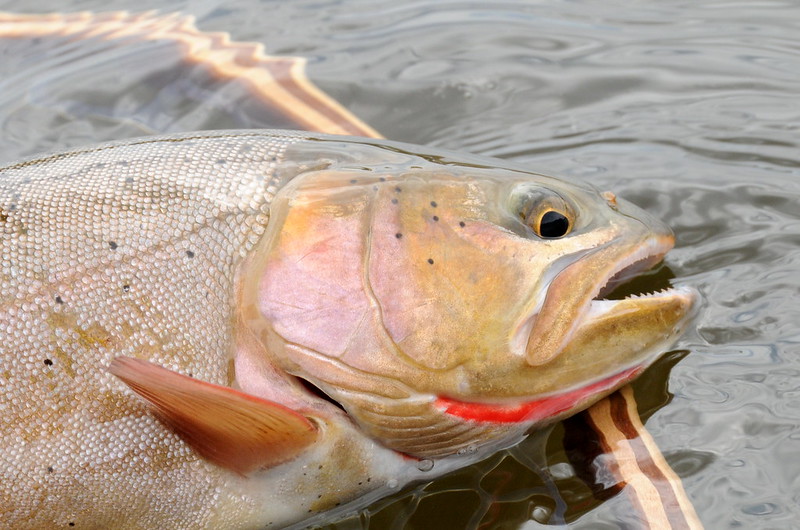Ask MidCurrent: Spey Curious—Not Just for Salmon and Steelhead
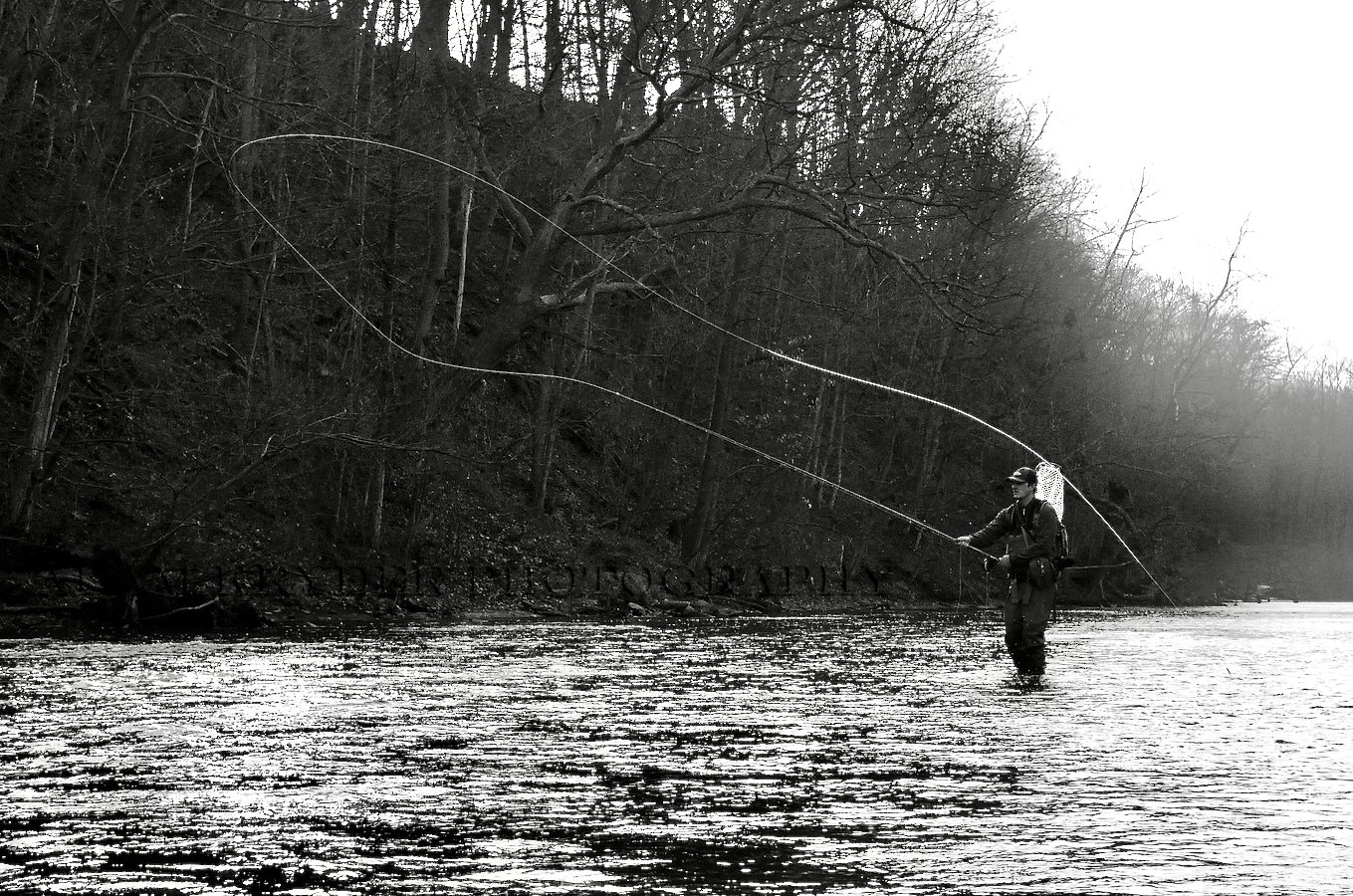
Image by Adam Kryder
Question: I’m intrigued by those long Spey rods. As a trout angler who occasionally fishes larger rivers and for other species, could a Spey rod work for me? I thought they were just for salmon and steelhead.
Answer: You’re not the only one. There’s been a notable surging interest in Spey fishing over the past decade. What was once a niche technique primarily used by dedicated steelhead and salmon anglers has evolved into a more mainstream fascination within the fly fishing community. This interest can be attributed to a couple of reasons:
1. Aesthetics. The combination of power and grace on display from a skilled Spey caster is sexy as hell and often jaw-droppingly so—droplets spray from the line as it leaps from coiled rest on the water’s surface, unfurls, shoots taut and hissing through the guides led by a perfect loop, launching for what seems damn near a mile. Whew… I got light-headed just envisioning that poetry in motion.
2. It’s deadly effective. Spey is a technique grounded in pragmatism that can translate to more fish on the hook regardless of species. And more fly anglers are realizing this fact.
Also, rod manufacturers have responded to this interest by developing a wider range of Spey and switch rods, making the entry into two-handed casting more accessible. Fly fishing shows, guides, and schools have also begun featuring more Spey casting instruction, further fueling curiosity and adoption. Perhaps most importantly, as anglers discover the versatility of Spey techniques for various species and water types, word-of-mouth has spread, leading more fly fishers to pick up these long rods and give them a try. This increased interest isn’t just a passing fad—it represents a significant shift in how many anglers approach their craft, opening up new possibilities and techniques across a broad spectrum of fly fishing scenarios.
The Spey Rod Advantage
Length and Two-Handed Casting
Before wading into the diverse applications of Spey rods, let’s understand what makes these tools unique and advantageous in certain fishing situations. Spey rods, typically ranging from 11 to 15 feet, are cast using both hands. This two-handed approach, combined with the rod’s length, allows anglers to generate powerful, efficient casts with minimal effort.
Casting in Tight Spaces
The main advantage of a Spey rod lies in its ability to cast long distances while requiring little to no back cast space. This makes Spey rods particularly well-suited for fishing in environments where obstructions behind the angler, such as trees, brush, tall grass, or steep banks, would normally hinder traditional overhead casting. The rolling and switch casts characteristic of Spey techniques allow for precise line control and presentation, even in challenging conditions.
Superior Line Management
The length of Spey rods provides superior line management capabilities. When fishing large rivers or in windy conditions, the added leverage of a longer rod helps keep more line off the water, reducing drag and allowing for better control of the fly’s drift. This can be all the difference between skunk and hero when targeting fish in complex currents or when trying to achieve a natural presentation in difficult lies.
Beyond Steelhead and Salmon
While Spey rods have proven their worth in pursuing anadromous species like steelhead and salmon, innovative anglers have been exploring their potential in other fishing scenarios.
Trout Fishing
Switch Rods for Versatility
Spey techniques are increasingly being adapted for trout fishing, particularly in larger rivers where long casts and precise mending are crucial. Lighter Spey rods, often referred to as “switch rods” because they can be cast both one and two-handed, are perfect for presenting large streamers or nymph rigs to wary trout in big water. The ability to cover more water efficiently can be a significant advantage when searching for trout in expansive systems.
Warmwater Species
Bass Fishing with Spey Rods
Bass anglers are discovering the benefits of Spey rods for targeting largemouth and smallmouth in rivers and lakes. The long casts achievable with a Spey rod allow anglers to cover vast stretches of shoreline quickly, while the superior line control aids in working large streamers or poppers effectively. In particular, smallmouth bass fishers are finding success using Spey techniques to swing streamers in rivers, much like they would for steelhead.
Coastal Fishing
Battling Wind and Waves
Spey rods are making inroads in coastal fishing where anglers often face challenging wind and the need for long casts. Species like striped bass, bluefish, and even redfish are being targeted with Spey techniques. The ability to cast heavy lines and large flies into the wind gives Spey rod users a distinct advantage in the surf or when casting to breaking fish from the shore.
Carp Fishing
Precision and Stealth for Selective Feeders
The growing popularity of carp on the fly has led some anglers to experiment with Spey rods in pursuit of these challenging fish. In large rivers or reservoirs where carp are found, the distance casting capabilities of a Spey rod can help anglers reach feeding fish without spooking them. The precise line control afforded by Spey techniques also allows for delicate presentations of small flies to selective carp.
Adapting Spey Techniques
Modifying Traditional Methods
The beauty of Spey fishing is its adaptability. Anglers pursuing species other than steelhead and salmon often modify traditional Spey techniques to suit their target species and fishing environments. For instance, trout anglers might use smaller, lighter Spey rods and lines to present dry flies or nymph rigs with pinpoint accuracy. Bass anglers might incorporate quick, sharp mends to impart action to their streamers, mimicking the erratic movement of baitfish.
Understanding Fundamental Principles
The key to successfully adapting Spey techniques lies in understanding the fundamental principles of the cast and how they can be applied to different fishing situations. The basic concepts of loading the rod, forming a D-loop, and using water tension to initiate the forward cast remain consistent across applications. However, the specific execution may vary depending on the size of the water, the type of fly being used, and the behavior of the target species.
Choosing the Right Spey Rod
Matching Rod to Application
For anglers interested in exploring the versatility of Spey rods, selecting the right tool for the job is important. While traditional Spey rods designed for salmon and steelhead might be overkill for smaller species or lighter presentations, the market now offers a wide range of options to suit various fishing scenarios.
Switch Rods: A Versatile Option
Switch rods, typically ranging from 10 to 12 feet in length, offer a great entry point for anglers looking to experiment with Spey techniques in a variety of fishing situations. These versatile rods can be cast both one and two-handed, providing flexibility when transitioning between different fishing styles or environments.
Specialized Spey Rods
For those targeting smaller rivers or species, shorter Spey rods in the 11 to 12-foot range can provide the benefits of Spey casting without sacrificing the ability to make quick, accurate casts in tighter quarters. Conversely, anglers fishing large coastal waters or pursuing powerful species might opt for longer, more powerful Spey rods that can handle heavy lines and large flies.
The Future of Spey Fishing
Innovation in Rod Design
As more anglers discover the advantages of Spey rods and techniques, it’s likely that we’ll continue to see innovation in both rod design and fishing applications. Manufacturers are already producing specialized Spey rods tailored to specific species and fishing scenarios, from ultralight trout Spey rods to heavy-duty saltwater-ready models.
Renewed Appreciation for Casting Art
This expansion of Spey fishing beyond its traditional applications is not only opening up new possibilities for anglers but also encouraging a renewed appreciation for the art and skill of fly casting. And, as previously mentioned, those fluid, graceful motions of Spey casting have a meditative/hypnotic/seductive quality that many anglers find deeply appealing, regardless of the species they’re pursuing.
While Spey rods may have their roots in the world of steelhead and salmon fishing, their versatility and advantages make them valuable tools for a wide range of angling pursuits. From trout streams to coastal waters, the long rods are proving their worth in diverse fishing scenarios. For anglers willing to invest the time in learning Spey techniques, a whole new world of fishing opportunities awaits.
